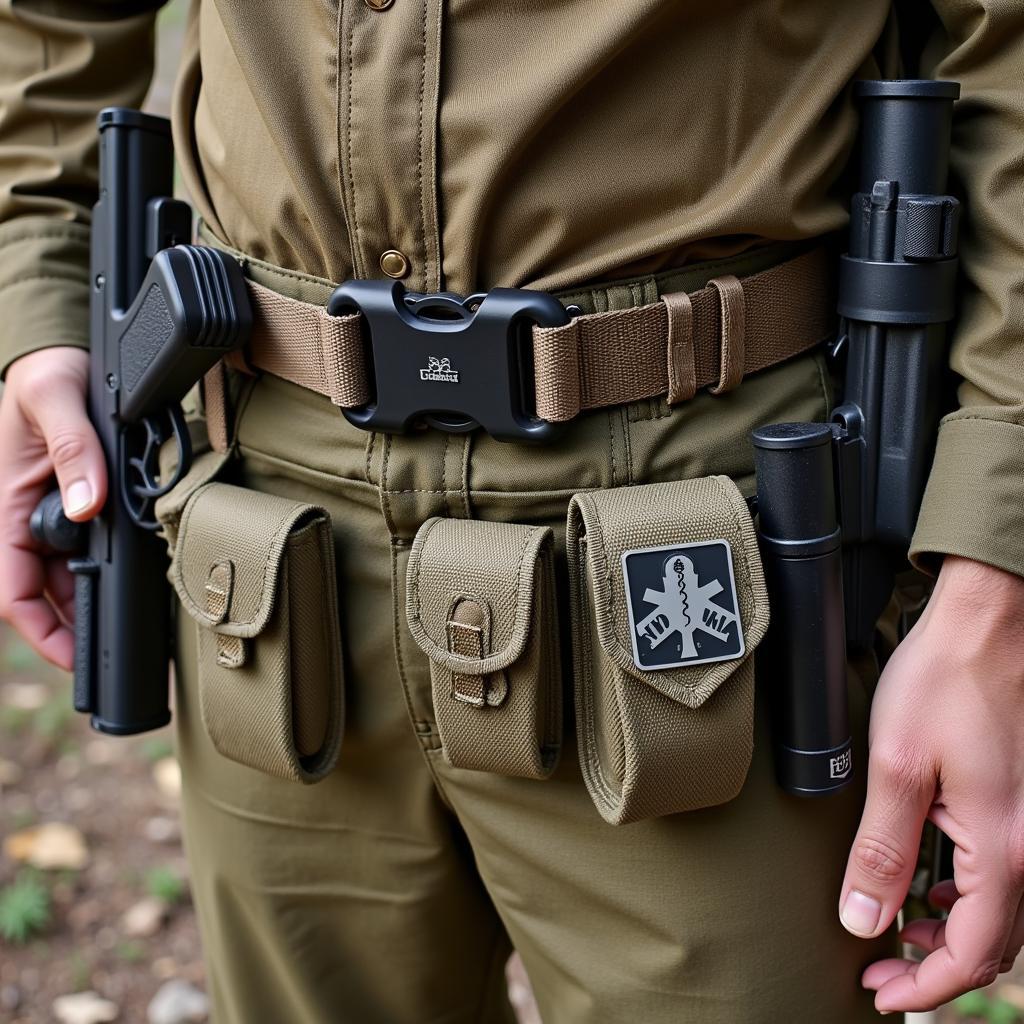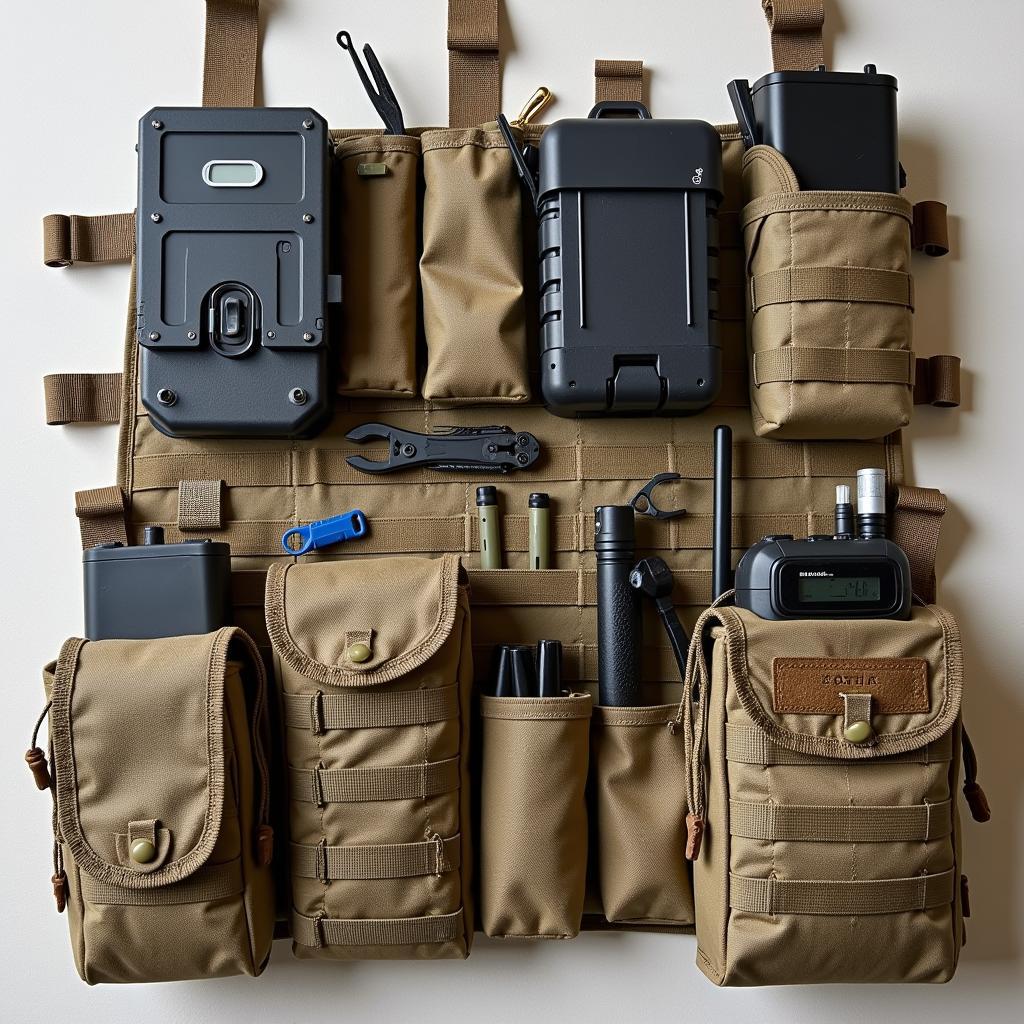Building the Ultimate Battle Belt: A Comprehensive Guide
October 10, 2024A battle belt, also known as a tactical belt, is a crucial piece of gear for military personnel, law enforcement officers, and tactical enthusiasts alike. It serves as a platform to carry essential equipment, providing quick access and even weight distribution for improved mobility and operational efficiency. Whether you’re a seasoned operator or just starting out, this guide will equip you with the knowledge to build the ultimate battle belt tailored to your specific needs.
Understanding the Fundamentals of Battle Belts
Before diving into the specifics of building your battle belt, it’s crucial to understand the fundamental principles behind its design and functionality. A well-built battle belt should be:
- Ergonomic and Comfortable: The belt should fit snugly around your waist without restricting movement or causing discomfort, even when fully loaded.
- Modular and Customizable: A good battle belt offers modularity, allowing you to add or remove pouches and accessories based on your mission requirements.
- Durable and Reliable: Choose high-quality materials and construction to ensure your belt can withstand the rigors of tactical use.
Key Components of a Battle Belt
A typical battle belt setup consists of several key components working in harmony:
- Inner Belt: Often a low-profile belt worn through your pant loops, providing a stable base for the outer belt to attach to.
- Outer Belt: The main platform for mounting pouches and accessories, typically featuring a secure closure system like a Cobra buckle.
- Pouches: Designed to carry specific items like magazines, medical supplies, flashlights, or multi-tools.
- Holster (if applicable): A secure platform for carrying your firearm, typically mounted on the dominant side.
- Suspenders (optional): Help distribute weight more evenly, especially for heavier loads, enhancing comfort and reducing fatigue.
 Essential Battle Belt Components
Essential Battle Belt Components
Choosing the Right Battle Belt for Your Needs
Selecting the right battle belt is paramount and depends largely on your individual requirements. Consider these factors:
- Intended Use: Identify your primary use case (military, law enforcement, shooting range, etc.) to guide your selection.
- Belt Width: Common widths include 1.5 inches and 1.75 inches. Ensure compatibility with your chosen pouches and holster.
- Material and Construction: Look for durable materials like nylon webbing, reinforced stitching, and robust buckles.
- Closure System: Cobra buckles are popular for their security and ease of use.
Selecting and Positioning Your Pouches
Pouches are the heart of your battle belt, housing the tools and equipment you need within arm’s reach.
- Prioritize Essentials: Start with pouches for your primary weapon magazines, medical gear (IFAK), and a multi-tool.
- Consider Accessibility: Position frequently used items within easy reach, considering your dominant hand and range of motion.
- Maintain Balance: Distribute weight evenly to avoid discomfort and ensure stability.
 Strategic Pouch Arrangement on a Battle Belt
Strategic Pouch Arrangement on a Battle Belt
Don’t Forget Comfort and Ergonomics
A well-fitting and comfortable battle belt is essential for extended use.
- Proper Fit: Ensure the belt sits securely on your hips, preventing it from riding up or sagging under load.
- Padding and Ventilation: Consider belts with internal padding or ventilation features for added comfort, especially in hot environments.
- Suspenders: For heavier loads, suspenders can significantly improve weight distribution and reduce strain on your lower back.
Expert Insights: A Word from John Riley, Tactical Gear Specialist
“Building a battle belt is a personal endeavor. There’s no one-size-fits-all solution,” says John Riley, a tactical gear specialist with over 20 years of experience. “Start with the essentials, prioritize quality over quantity, and don’t be afraid to experiment with different configurations until you find what works best for you.”
Conclusion: Your Battle Belt, Your Advantage
Building the ultimate battle belt is an ongoing process. By understanding the fundamentals, carefully selecting your components, and prioritizing comfort and functionality, you can create a personalized setup that enhances your operational effectiveness and preparedness. Remember to train consistently with your gear to build familiarity and confidence in its use.
Frequently Asked Questions (FAQs)
1. Can I use a regular belt as a battle belt?
Regular belts lack the rigidity and secure attachment points necessary for a battle belt.
2. How tight should my battle belt be?
It should be snug enough to prevent sagging but not so tight that it restricts movement or breathing.
3. What is the best material for a battle belt?
Durable nylon webbing is the most common and reliable material for battle belts.
Need Help?
Contact us at Phone Number: 0915117113, Email: [email protected]. Or visit us at Address: To 3 Kp Binh An, Phu Thuong, Viet Nam, Binh Phuoc 830000, Vietnam. Our customer service team is available 24/7.